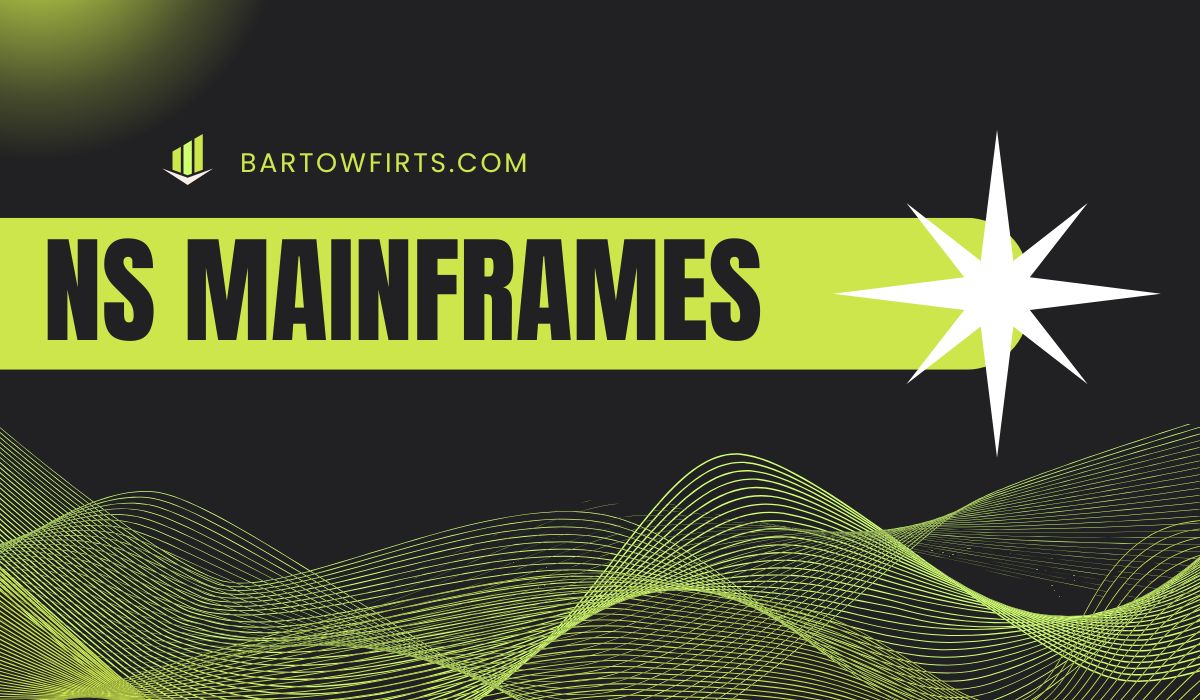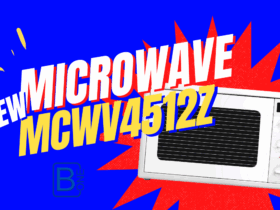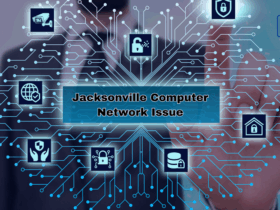In the ever-evolving world of information technology, legacy systems continue to hold significant value, especially in enterprise environments where reliability, scalability, and security are paramount. One such enduring technology is the mainframe. Within this sphere, the term “NS mainframe” has garnered attention, often associated with high-performance computing platforms tailored for critical business operations.
This article delves into the realm of NS mainframes—what they are, how they work, and why they remain indispensable in modern computing environments. We’ll also explore their historical evolution, key features, use cases, and their place in the future of enterprise IT.
What is an NS Mainframe?
At its core, an NS mainframe refers to a class of mainframe computers or systems that are designed for Network Server (NS) environments. These are large, powerful machines used primarily by large organizations to process vast volumes of data with high levels of security, uptime, and processing speed. The term “NS mainframe” is often associated with systems built for network-centric computing tasks, where they function as the central node for distributed computing environments.
The “NS” in NS mainframe may vary slightly in meaning depending on context—ranging from “Network Server” to “Next-Scale” mainframe—each emphasizing its role in providing large-scale, networked computational resources. Regardless of the specific interpretation, NS mainframes serve as robust platforms for running mission-critical applications, databases, and transaction processing.
Historical Evolution of the NS Mainframe
To understand the relevance of NS mainframes today, it’s essential to trace their historical roots. The concept of the mainframe dates back to the 1950s, when computers like IBM’s System/360 revolutionized data processing for large institutions. Over the decades, mainframes have evolved from room-sized behemoths with punched cards to sleek, efficient systems capable of handling billions of transactions daily.
The NS mainframe emerged as a result of these evolving needs—particularly the need to integrate mainframe capabilities with modern network and cloud computing infrastructures. While traditional mainframes were self-contained and isolated, NS mainframes are designed to interact with distributed networks, enabling seamless integration with external applications, APIs, and services.
Core Features of an NS Mainframe
- High Availability and Reliability One of the defining traits of NS mainframes is their unparalleled reliability. These systems are engineered to run continuously for years without interruption, often achieving 99.999% uptime. This makes them ideal for industries where downtime is not an option—such as banking, healthcare, and telecommunications.
- Massive Data Throughput NS mainframes are designed to process vast amounts of data in real-time. They are optimized for high Input/Output operations per second (IOPS), which is essential for transaction-heavy environments like online banking or retail point-of-sale systems.
- Advanced Security Protocols With increasing concerns around cybersecurity, NS mainframes offer robust security frameworks that include hardware-based encryption, secure partitioning, and compliance with regulatory standards such as HIPAA, GDPR, and SOX.
- Scalability and Flexibility Contrary to the misconception that mainframes are rigid systems, NS mainframes provide flexible architecture that can scale vertically (adding more resources to a single machine) and horizontally (integrating with cloud or distributed systems).
- Virtualization and Workload Management NS mainframes support advanced virtualization technologies, allowing multiple workloads to run simultaneously and independently. This means that a single physical mainframe can support numerous virtual servers, each tailored to a specific application or service.
- Support for Hybrid Cloud Environments Modern NS mainframes are cloud-enabled, making them a viable option for hybrid cloud architectures. They can function as a private cloud or be integrated with public cloud platforms like AWS, Azure, or IBM Cloud.
Architecture of NS Mainframe Systems
The architecture of an NS mainframe is both complex and elegant. At a high level, these systems consist of multiple subsystems working in harmony to ensure optimal performance and reliability. Here are the key components:
- Central Processing Complex (CPC): This is the core of the NS mainframe where the primary processing takes place. It consists of multiple central processors, memory, and input/output channels.
- Operating Systems: NS mainframes typically run specialized operating systems such as z/OS, z/VM, or Linux on Z. These are designed to handle large workloads, multitasking, and multi-user environments.
- Middleware and Application Servers: These facilitate the execution of enterprise applications and services. Examples include IBM CICS for transaction processing and DB2 for database management.
- Network Interfaces: Given their role as network servers, NS mainframes come equipped with high-speed Ethernet adapters and support for TCP/IP, FTP, HTTP, and other protocols.
- Storage Subsystems: These include RAID-enabled disk arrays and tape libraries for long-term data storage and backup.
- Security Modules: Hardware Security Modules (HSMs), access control systems, and encryption units are integrated into the mainframe to ensure data integrity and confidentiality.
Use Cases of NS Mainframes
Financial Services
Banks and insurance companies rely heavily on NS mainframes to handle millions of transactions daily. These include everything from ATM withdrawals to real-time fraud detection. The high throughput and security make them a natural fit for such applications.
Government and Defense
Government agencies use NS mainframes for applications requiring strict data privacy and resilience, including tax processing, social security systems, and national defense infrastructure.
Healthcare
Hospitals and health insurers use NS mainframes to manage electronic health records (EHRs), billing systems, and regulatory reporting. The ability to maintain uptime and meet compliance standards is crucial in this sector.
Retail and E-commerce
Large retailers use NS mainframes for inventory management, customer relationship management (CRM), and point-of-sale systems. Their capability to handle massive concurrent transactions ensures smooth operations during high-demand periods like Black Friday.
Transportation and Logistics
Airlines, railways, and shipping companies use NS mainframes for reservation systems, cargo tracking, and route optimization. These systems often need to operate in real time, with zero margin for error.
Integration with Modern Technologies

NS Mainframe and Cloud Computing
As businesses move toward cloud-native applications, NS mainframes have adapted by supporting APIs, containerization, and orchestration tools like Kubernetes. Organizations can now integrate their legacy mainframe applications with microservices hosted on cloud platforms, enabling faster deployment and greater agility.
Artificial Intelligence and Machine Learning
Though mainframes were traditionally not associated with AI, the new generation of NS mainframes supports frameworks like TensorFlow and PyTorch through hybrid cloud integration. This allows enterprises to run AI models on data stored on mainframes, unlocking insights without moving data across networks.
Blockchain and NS Mainframes
Some NS mainframes have started to incorporate blockchain technology to enhance transparency and security in transactions. This is especially relevant in sectors like supply chain and finance, where provenance and tamper-proof records are essential.
Challenges Facing NS Mainframes
Despite their many advantages, NS mainframes are not without challenges:
- High Initial Costs: The upfront investment for acquiring and maintaining an NS mainframe can be significant, which may deter small to mid-sized businesses.
- Skilled Workforce Shortage: With many experienced mainframe professionals nearing retirement, there’s a growing skills gap in managing and programming these systems.
- Perceived Obsolescence: Some organizations hesitate to adopt or continue using mainframes due to the perception that they are outdated, despite evidence to the contrary.
- Complexity in Integration: While modern NS mainframes support integration with newer technologies, achieving seamless interoperability can require careful planning and specialized expertise.
Future of NS Mainframes
Far from being relics of a bygone era, NS mainframes are evolving to meet the demands of the digital age. With developments in cloud integration, AI, and cybersecurity, they are positioned to remain central to enterprise computing for years to come. Companies like IBM and Broadcom (formerly CA Technologies) continue to invest in mainframe research and development, signaling a bright future for this technology.
Emerging trends such as quantum computing and edge computing may eventually intersect with NS mainframe capabilities, enabling even more powerful and efficient enterprise systems. Furthermore, as sustainability becomes a business imperative, the energy efficiency of NS mainframes (compared to sprawling server farms) could make them even more attractive.
Conclusion
The NS mainframe is not just a legacy system holding on in the face of change; it is a continuously evolving powerhouse of enterprise computing. With unmatched reliability, security, and scalability, NS mainframes continue to play a pivotal role in sectors where performance and precision are non-negotiable.
Whether integrating with the cloud, supporting AI workloads, or maintaining mission-critical applications, NS mainframes offer a stable yet adaptable platform. Their future lies in hybrid architectures, where they work in tandem with modern technologies to deliver unparalleled business value.
As organizations navigate digital transformation, revisiting the capabilities of NS mainframes may offer not just continuity, but also a competitive edge. For enterprises aiming to balance innovation with stability, the NS mainframe remains a strategic asset worth considering.
Find more topics here










Leave a Reply